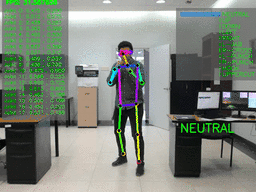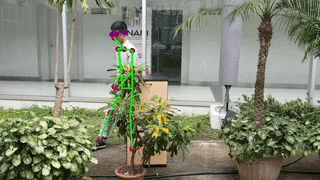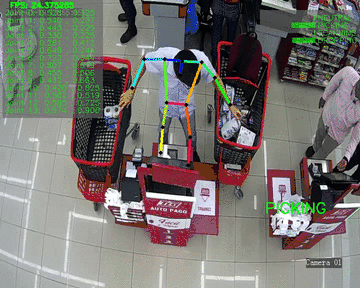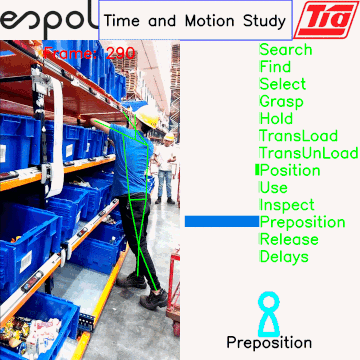Research Projects
Conducting demand-driven research
About us
INARI is a Research Lab exploring the use of Deep Learning to solve real industrial problems.
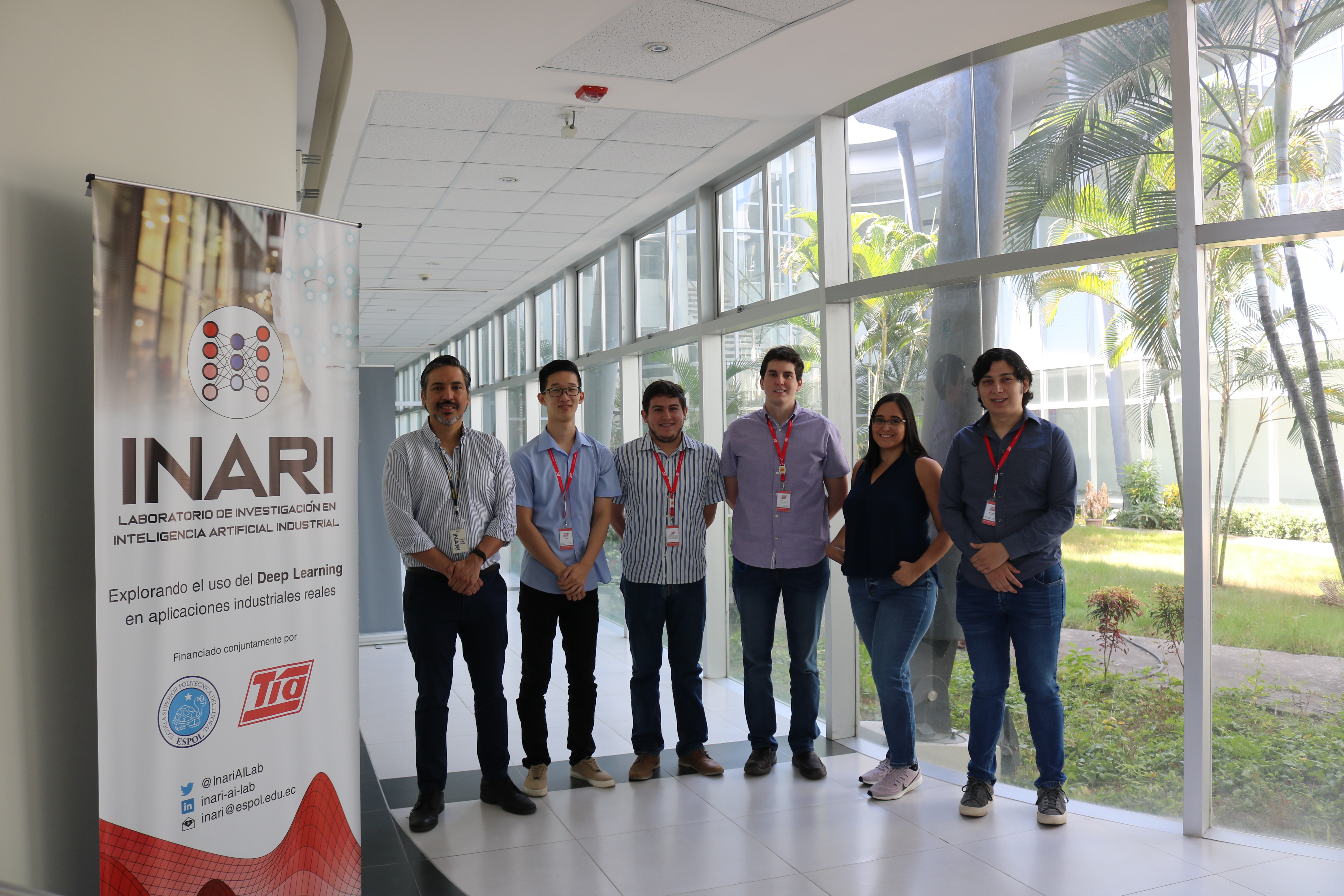
We are a joint venture between academia (ESPOL) and industry (TIA S.A.):
- Escuela Superior Politecnica del Litoral ESPOL is a top engineering school in the coastal city of Guayaquil in Ecuador.
- Tiendas Industriales Asociadas TIA S.A. is a leading grocery retailer in Ecuador.
INARI creates value for academia by conducting and disseminating innovative research; likewise, industrial value is created by exploiting the results of our research.

A general focus of our research projects is to achieve automatic understanding of industrial operations through the use of artificial vision from videos obtained by low-cost ubiquitous CCTV cameras. Our systems aim to effectively integrate artificial vision with prescriptive analytics for assisting in operations management.
Our mission
- To explore the use of deep learning to solve real industrial problems increasing our industrial competitiveness
- To develop technically skilled human talent on the use of deep learning, scarce in the region
Research projects
People and vehicle counter using a multi-object tracking system
We have developed a people-counter system that analyses CCTV videos following a tracking-by-detection paradigm.
The system uses object detectors to locate every person in the video, it then uses a tracker to assign an ID to each detection to consolidates detections of the same person on different frames.
Heatmaps and traffic-flow analysis
Heatmaps and traffic-flow analysis allow to make critical operational decisions at the retail scene, with applications, such as: hot-zones estimation, dwell-time calculation, and conversion-rate inference.
We developed a system to find and analyse trajectories of customers in a retail store, using videos from CCTV cameras.

We used an object detector to allow for fast (real time) traffic-flow and heatmap estimation of specific objects. Thus, the system is able to perform its analysis on clients, shopping carts or supermarket baskets, separately.

Furthermore, our system is able to reconstruct a large scene by transforming and consistently concatenating various video sources.
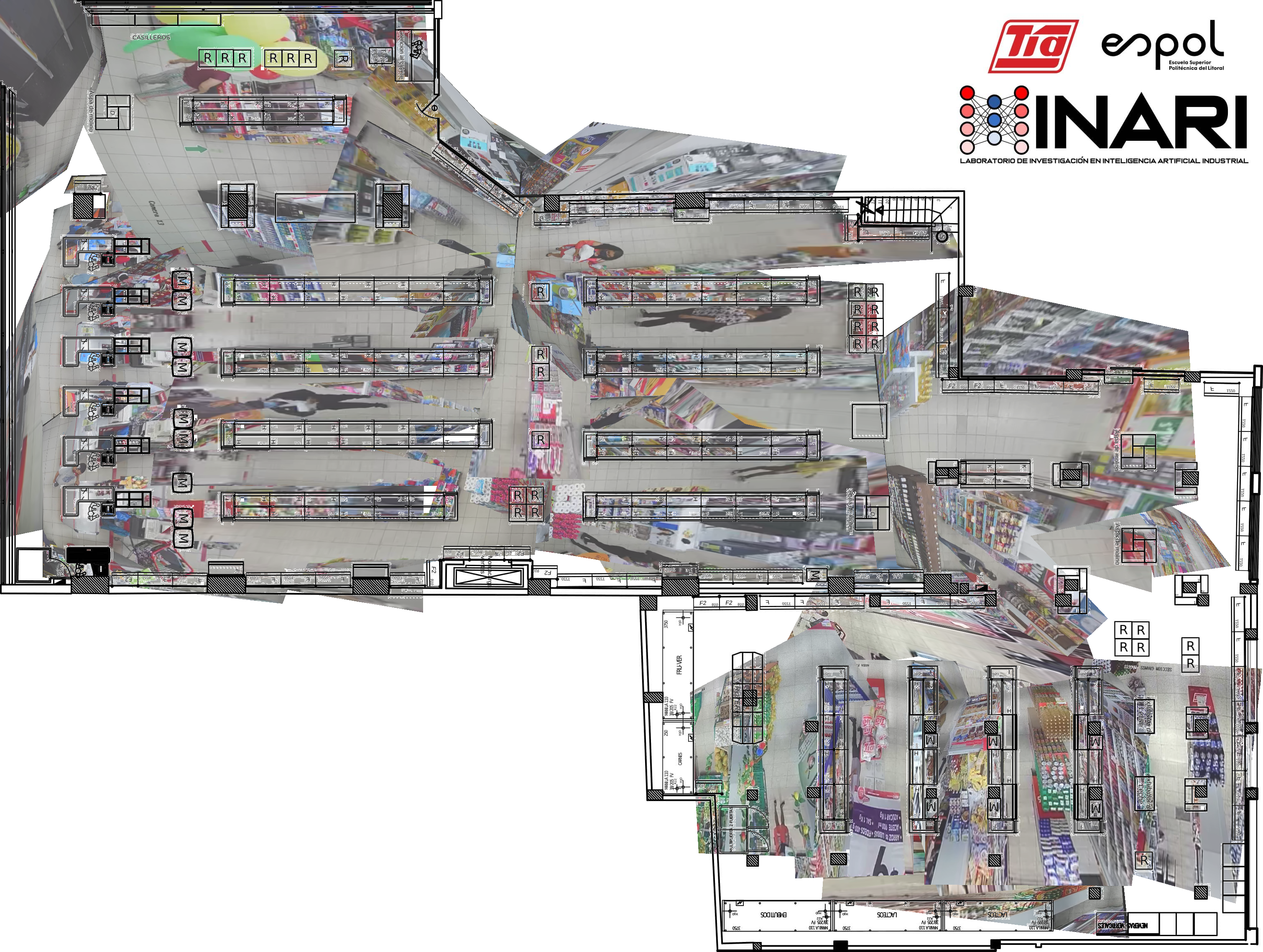
Heatmaps and traffic-flow analysis can then be performed on these larger-scene representations.
Vehicle routing problem with multiple vehicles and heterogeneous capacities
This project applies Deep Reinforcement Learning (DRL) to provide an end-to-end method to solve the Vehicle Routing Problem (VRP) with multiple vehicles and heterogeneous capacities.

We propose a model and a training procedure to route a fleet of vehicles with different capacities to act cooperatively and solve the routing problem. Our trained model generates better solutions than commonly used heuristics for large instances; falling short to, however, Google’s OR-Tools.

It is important to note that our proposed model finds policies that can be used to automate the task of routing a heterogeneous fleet for any configuration of nodes. This is a limitation of methods like OR-Tools that need to set up and solve each instance individually.
Conversion rate estimation
Estimating the percentage of customers who leave a store without a purchase is of interest for retail analytics (e.g., for estimating store-performance metrics and benchmarking stores.)

At INARI we have developed a system for estimating the conversion rate of customers by analyzing the percentage of customers who hold a bag in their hands at the time of leaving the store.

The system achieves an accuracy of 90.5% on videos from CCTV cameras.
Diabetic-retinopathy detection using deep learning
Diabetic Retinopathy (DR) remains a leading cause of vision loss worldwide. While, currently, there is no effective treatment for DR, early detection is critical because its progress may be slowed down.

At INARI we have developed a system that uses deep learning to determine the level of DR severity in a fundus image using clinically labeled images.

Additionally, our system can perform Retinal Image Segmentation and Feature Visualization.
Pratt, H., Coenen, F., Harding, S. P., Broadbent, D. M., & Zheng, Y. (2019). Feature visualisation of classification of diabetic retinopathy using a convolutional neural network. In CEUR Workshop Proceedings (Vol. 2429, pp. 23-29).
Aiding to mitigate COVID-19 propagation
Physical distancing detection
Physical distancing is one of the most effective methods for mitigating the COVID-19 propagation without closing the economy. However, making sure that the people will follow the prevention measures can be a difficult task.
At INARI we developed a system that uses object-detection technology to monitor real-time human distancing by estimating a density metric in videos from CCTV cameras.
Additionally, this system protects the privacy of the individuals appearing in the videos, as it never identifies personal information.
Estimation of mask usage
At INARI, we developed a system capable of estimating the percentage of people using masks by analyzing the images in a video. The system detects if a person is using a mask and considers only the most trustworthy detections for the estimation.
The obtained analytics can be used to inform the authorities about the compliance of the population to the COVID-19 prevention measures.
Detection of specific wearable items
A large number of thefts at supermarkets are perpetrated by individuals using specific types of wearable items, such as hats and sunglasses. This research project aims to develop an object-detection system trained to identify these types of items.

Our system consists of three modules:
- Detection module: detects people on each frame.
- Assignment module: assigns and id to each detection to perform object tracking.
- Classification module: analyses images on each id and classifies them as having one of a number of pre-specified items.

Based on this information, the system presents real-time analytics about the percentage of detected persons with and without these items.

Our system achieves an accuracy of 91.37% and 90.11%, on sunglasses and hats, respectively.
Human Action Recognition (HAR)
We have developed various modules and systems for human-action recognition (HAR), adapting and expanding known literature on the topic.

Industrial applications of HAR
We have developed various industrial applications of HAR at INARI, such as a fraud-detection system for self checkouts and a system for automatic industrial Time-and-Motion study.
J. Hernandez, G. Valarezo, R. Cobos, J. Kim, R. Palacios and A. Abad, (2020) “Hierarchical Human Action Recognition to Measure the Performance of Manual Labor,” (ready for submition)
J. Hernandez, G. Valarezo, S. Lopez and A. Abad, (2020) “Automatic time and motion study using Deep Learning” (ready for submition).
In the news
- El Universo: Espol desarrolla proyectos de inteligencia artificial que ayudan a detectar el uso de mascarilla y el distanciamiento físico
- EcuadorTV: Reportaje sobre proyectos en Inteligencia Artificial desarrollados en INARI relacionados con COVID19
- Expreso: Caballos y carreta
- Desde el centro: Innovación en el sector de retail Ecuatoriano: El Caso exitoso de Almacenes Tía
- Diario Qué: Espol crea sistema con inteligencia artificial para monitorear el distanciamiento social y el uso de mascarillas
- Expreso: Espol crea proyectos de inteligencia artificial que detectan el uso de mascarilla y el distanciamiento físico
- TIA Corporativo: Representantes de rice university visitan nuestro Laboratorio Inari
- Radio Centro: Espol desarrolla proyectos de inteligencia artificial que ayudan a detectar el uso de mascarilla y el distanciamiento físico
- Noticias Espol: Richard Martínez, Ministro de Economía y Finanzas, visitó ESPOL (Laboratorio INARI)
- Eje Industrial: Industria que se fortalece con la robótica
Papers
- J. Kim, R. Cobos, J. Hernandez, R. Palacios, and A. Abad. (2020) “Robust Human Action Recognition through latent space learning” (ready for submition).
- J. Hernandez, G. Valarezo, R. Cobos, J. Kim, R. Palacios and A. Abad, (2020) “Hierarchical Human Action Recognition to Measure the Performance of Manual Labor,” (ready for submition)
- J. Hernandez, G. Valarezo, S. Lopez and A. Abad, (2020) “Automatic time and motion study using Deep Learning” (ready for submition).
- E. Boza, X. Andrade, J. Cedeno, J. Murillo, H. Aragon, C. Abad, and A. Abad, (2020). “On Implementing Autonomic Systems with a Serverless Computing Approach: The Case of Self-Partitioning Cloud Caches.” Computers, 9(1), 14.
- J. Vera, and A. Abad. (2019). "Deep reinforcement learning for routing a heterogeneous fleet of vehicles." In 2019 IEEE Latin American Conference on Computational Intelligence (LA-CCI) (pp. 1-6). IEEE.
- R. Cobos, J. Hernandez, and A. Abad. (2019) "Retail Traffic-Flow Analysis Using a Fast Multi-object Detection and Tracking System." IEEE Colombian Conference on Applications in Computational Intelligence. Springer, Cham, 2019.
- R. Cobos, J. Hernandez, and A. Abad (2019), "A fast multi-object tracking system using an object detector ensemble," Proceedings of the 2nd IEEE Colombian Conference on Applications in Computational Intelligence ColCACI 2019.
- J. Hernandez, and A. Abad (2018), "Spatial and temporal feature extraction using a restricted Boltzmann machine model," Communications in Computer and Information Science, Springer.
- J. Hernandez, and A. Abad (2018), "Learning from Multivariate Discrete Sequential data using a Restricted Boltzmann Machine Model," Proceedings of the 1st IEEE Colombian Conference on Applications in Computational Intelligence ColCACI 2018.
- A. Abad, and L. Reyes (2017), "Collaborative Filtering using Denoising Auto-Encoders for Market Basket Data," Proceedings for the IISE Industrial and Systems Engineering Research Conference ISERC'2017.
- C. Abad, A. Abad, and L. Lucio (2017), "Dynamic Memory Partitioning for Cloud Caches with Heterogeneous Backends," Proceedings of the 8th ACM/SPEC on International Conference on Performance Engineering, ICPE'17, pp. 87-90.


